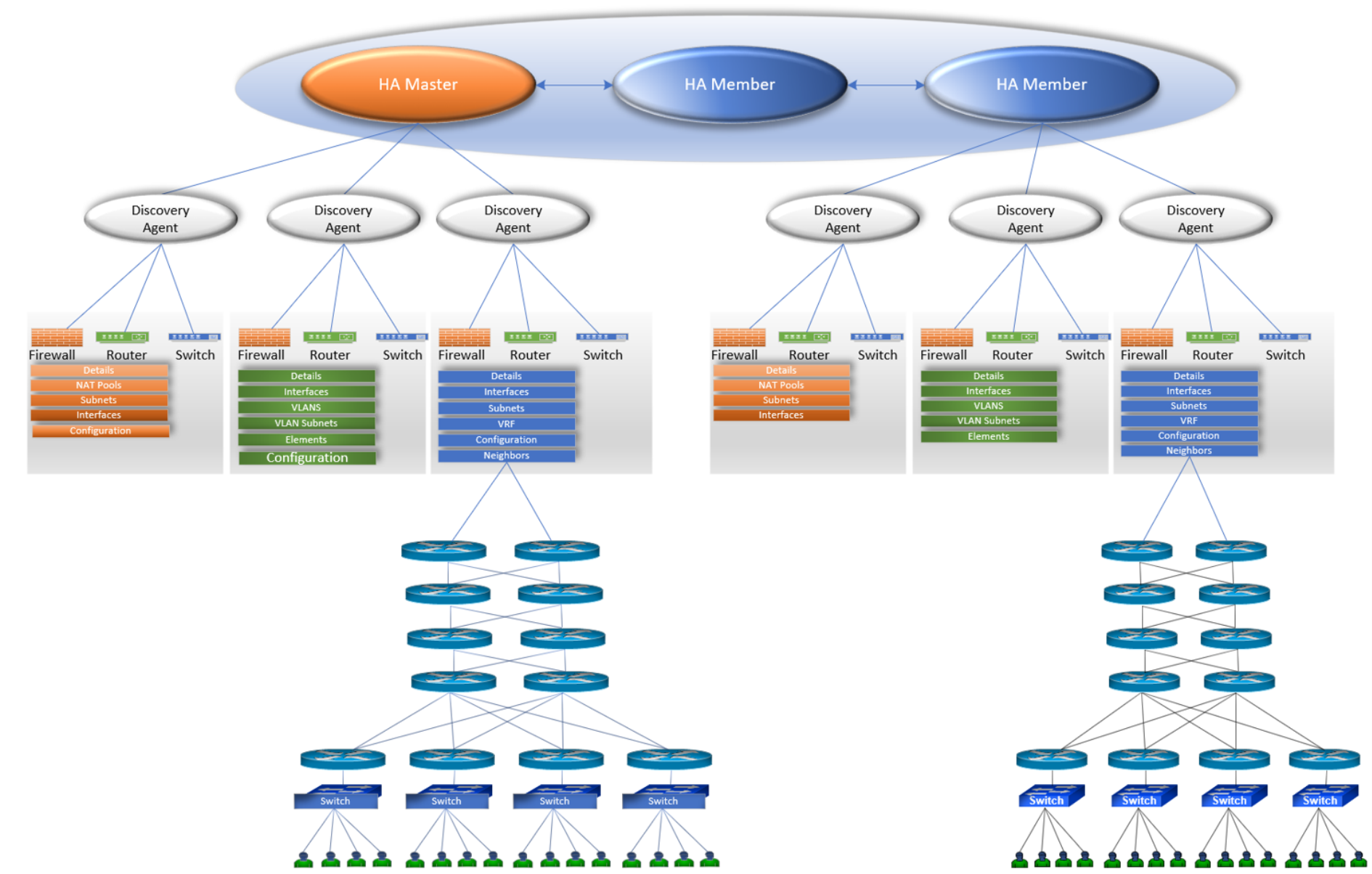
In the digital era, many organizations rely on networks more than ever before, and additionally, with the influx of many digital transformation initiatives, the networks have become more dynamic. It has made it difficult for the organizations to gain visibility into the network topology – which includes devices connected to the network, those devices have access to, and how those devices interact. Manually monitoring your organization’s network can lead to inaccuracies due to undetected devices, outdated data, and other common visibility issues. Hence organizations look forward to having a tool that automatically discovers the entire IoT infrastructure, provides a deep insight into one’s network’s performance, and aids troubleshooting. This white paper provides an insight into TCPWave’s Distributed Discovery.
Discovery Crawler Engine (DCE) runs on the IPAM/remote appliance or VM instance. DCE makes periodic REST API calls to fetch the configuration instructions from the IPAM master. Once the DCE receives the configuration from the IPAM master and after validating the configurations, DCE checks for the available router or switch to start the discovery process. The configurations are stored in the DB for the systematic discovery process.

DCE uses SNMP, SSH, PING, NMAP, etc., discovery methods to fetch the router or switch configurations and derive appropriate seed routers and connected devices. While crawling the seed router and if DCE identifies any other seed routers connected, the new routers’ information is posted to IPAM. IPAM generates the configuration with new routers and decides the next available remote appliance to perform the discovery. DCE identifies connected leaf routers or switches. These details are sent to IPAM to determine the available remotes agent. DCE uses multithreading for crawling multiple routers, switches, and objects. The discovery engine supports detecting hardware of multi-vendors such as Cisco, Juniper, Huawei, Extreme, Arista, FortiGate, etc., The ability to perform the discovery process is controlled by the permissions of the TCPWave Identity Administration module.
TCPWave’s Distributed Discovery is a one-stop solution for all organizations. It examines and monitors multi-vendor networks with visually pleasing network insights, the alert mechanism to signal a warning before it is noticed, and sends alerts via messaging platforms email, telegram, slack, etc., based on threshold configuration. Additionally, it improves the organization’s security by helping the network teams identify open ports on connected devices that lead to identifying any threats sitting quietly on network infrastructure, poised for a malicious attack. For a quick demo on TCPWave’s Distributed Discovery, contact the TCPWave Sales Team.